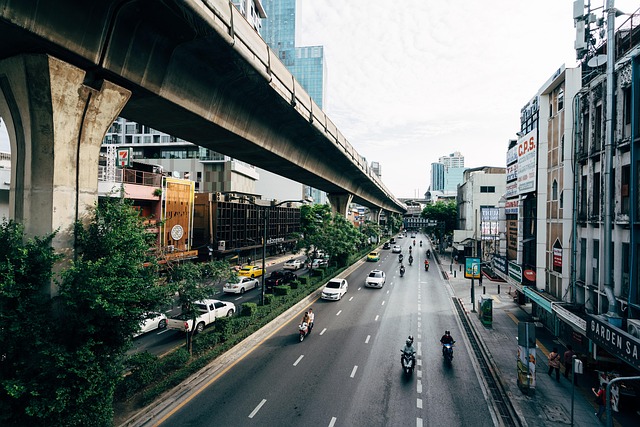Exploring India’s Postal Network Through Pincodes

India’s postal network is one of the largest and most intricate in the world, connecting bustling metropolitan cities to remote villages nestled in the Himalayas. At the heart of this vast system lies the Postal Index Number (PIN) code, a six-digit marvel that ensures parcels, letters, and goods reach their destinations with precision. In this comprehensive guide, we dive deep into the workings of India’s postal network, exploring how pincodes streamline operations, empower e-commerce, bridge urban-rural divides, and shape the future of logistics in India.
This 3000+ word blog will cover the history, mechanics, benefits, challenges, and modern applications of pincodes, alongside actionable insights for businesses and answers to common questions in an FAQ section.
What Are Pincodes?
A Postal Index Number (PIN) code is a six-digit numerical code used by India Post to categorize geographic areas for efficient sorting and delivery of mail and parcels. Introduced on August 15, 1972, the pincode system was designed to simplify the complexities of India’s diverse geography, which spans over 3.28 million square kilometers and includes more than 600,000 villages and 4,000 cities.
Each pincode represents a specific region, ranging from a cluster of villages to a neighborhood in a metropolitan city. For example:
- 110001 corresponds to Connaught Place in New Delhi.
- 400001 denotes the Fort area in Mumbai.
- 600001 covers Parry’s Corner in Chennai.
The system ensures that every corner of India, from urban hubs to remote tribal areas, is accessible via a standardized code, making it easier to route letters, parcels, and goods.
Why Pincodes Matter
Pincodes are more than just numbers—they are the backbone of India’s postal and logistics ecosystem. They serve multiple purposes:
- Geographic Precision: Pincodes pinpoint exact locations, reducing delivery errors.
- Operational Efficiency: They streamline sorting and routing processes at post offices and distribution centers.
- Customer Convenience: Pincodes enable businesses to estimate delivery times and check serviceability instantly.
- Economic Impact: By connecting remote areas to markets, pincodes drive economic inclusion.
With over 19,300 pincodes and 155,000 post offices as of 2025, India’s postal network is a logistical marvel, and pincodes are its guiding force.
The History of Pincodes in India
The pincode system was born out of necessity. Before 1972, India’s postal system relied on manual sorting and vague address formats, leading to delays, misdeliveries, and inefficiencies. With a growing population and increasing mail volume, the need for a standardized system became evident.
The Birth of Pincodes
On August 15, 1972, India Post introduced the PIN code system, inspired by global postal code models like the ZIP code in the United States. The initiative was spearheaded by Shriram Bhikaji Velankar, a senior postal official, who envisioned a system to modernize mail delivery.
The six-digit structure was carefully designed to reflect India’s geographic diversity:
- The first digit represents one of nine postal zones (e.g., 1 for Delhi, Punjab, and Himachal Pradesh; 4 for Maharashtra and Goa).
- The second digit narrows it down to a sub-region or state.
- The third digit indicates a specific sorting district.
- The last three digits denote a particular post office or delivery area.
For example, the pincode 560001 breaks down as:
- 5: Southern region (Karnataka, Andhra Pradesh, etc.).
- 6: Karnataka state.
- 0: Bangalore sorting district.
- 001: General Post Office (GPO) in Bangalore.
Evolution Over Time
Since its inception, the pincode system has evolved to accommodate India’s growth:
- Expansion of Coverage: New pincodes were added to include emerging urban areas and remote regions.
- Integration with Technology: Pincodes became central to e-commerce and digital logistics platforms.
- Public Awareness: Campaigns by India Post educated citizens on the importance of including pincodes in addresses.
Today, pincodes are synonymous with reliability, forming the foundation of both traditional postal services and modern logistics.
How Pincodes Work in India’s Postal Network
The pincode system is a masterpiece of logistical engineering, enabling India Post and private logistics providers to handle millions of packages daily. Here’s a step-by-step look at how pincodes function:
1. Sorting and Categorization
When a letter or parcel is mailed, the pincode is the first piece of information processed. At postal sorting centers, automated machines and manual staff use pincodes to:
- Group items by postal zones (first digit).
- Route them to regional hubs (second and third digits).
- Direct them to local post offices (last three digits).
For example, a package from Kolkata (700001) to Jaipur (302001) is sorted as follows:
- Identified as zone 7 (Eastern region) and routed to a Kolkata hub.
- Transferred to zone 3 (Rajasthan) via inter-state transport.
- Delivered to the Jaipur post office for last-mile delivery.
2. Last-Mile Delivery
The final stage, known as last-mile delivery, is where pincodes shine. Delivery agents use pincodes to navigate complex urban layouts or rural terrains. In cities, pincodes help distinguish between neighborhoods; in villages, they guide agents to specific clusters.
3. Integration with Logistics Partners
Private logistics companies like Delhivery, Blue Dart, and Ecom Express rely on pincodes to complement India Post’s network. These firms use pincode data to:
- Assign packages to the nearest distribution centers.
- Optimize delivery routes using GPS and AI algorithms.
- Provide real-time tracking to customers.
4. Enabling Digital Platforms
E-commerce giants like Amazon, Flipkart, and Myntra integrate pincodes into their platforms. When customers enter a pincode, the system:
- Checks product availability in nearby warehouses.
- Estimates delivery timelines (e.g., same-day, next-day).
- Displays shipping costs or free delivery offers.
This seamless integration has made pincodes indispensable for online shopping in India.
The Role of Pincodes in Logistics and E-Commerce
India’s e-commerce market is projected to reach $200 billion by 2026, and pincodes are a driving force behind this growth. Here’s how they fuel logistics and online retail:
1. Faster Deliveries
Pincodes enable precise sorting and routing, reducing delivery times. For example:
- Urban Areas: Same-day and next-day deliveries are possible in metro cities like Delhi (110) and Mumbai (400) due to dense pincode networks.
- Tier-2/3 Cities: Pincodes help logistics firms expand to cities like Jaipur (302) and Coimbatore (641).
- Rural Markets: Pincodes like 797112 (Nagaland) ensure even remote areas receive packages within days.
2. Warehouse Optimization
E-commerce companies use pincode data to strategically place warehouses. High-demand pincodes (e.g., 560 for Bangalore) have multiple fulfillment centers, minimizing shipping distances and costs.
3. Hyperlocal Deliveries
Pincodes power hyperlocal models, where products are dispatched from nearby stores. For instance, Dunzo and Swiggy Instamart use pincodes to deliver groceries and essentials within hours in cities like Hyderabad (500).
4. Customer Trust and Transparency
By providing accurate delivery estimates based on pincodes, businesses build trust. Features like cash-on-delivery (COD), popular in pincodes with low digital payment adoption, rely on pincode verification to ensure serviceability.
5. Market Expansion
Pincodes have unlocked tier-2, tier-3, and rural markets, where 70% of India’s population resides. For example, brands like Nykaa and Meesho use pincodes to deliver beauty products and affordable goods to pincodes like 854 (Bihar) and 689 (Kerala).
Bridging the Urban-Rural Divide
India’s diversity—urban skyscrapers juxtaposed with rural hamlets—poses unique logistical challenges. Pincodes play a critical role in bridging this divide.
Urban Efficiency
In cities, pincodes simplify navigation through crowded streets and overlapping neighborhoods. For example:
- In Mumbai, pincodes like 400053 (Andheri West) and 400058 (Andheri East) distinguish adjacent areas, preventing confusion.
- In Delhi, pincodes like 110092 (Laxmi Nagar) help delivery agents locate specific colonies.
Rural Reach
In rural India, pincodes ensure connectivity to areas with limited infrastructure:
- Remote Villages: Pincodes like 194201 (Leh, Ladakh) enable deliveries to high-altitude regions.
- Tribal Areas: Pincodes in states like Chhattisgarh (495) connect isolated communities to markets.
- Agricultural Hubs: Pincodes in Punjab (141) help farmers access e-commerce for seeds and tools.
Economic Inclusion
By enabling deliveries to rural pincodes, businesses empower small entrepreneurs and consumers. For example:
- Artisans: Handicraft sellers in pincodes like 342 (Jodhpur, Rajasthan) can ship products globally.
- Farmers: Agri-tech platforms deliver fertilizers to pincodes like 431 (Aurangabad, Maharashtra).
- Students: Ed-tech companies ship study materials to pincodes like 781 (Assam).
This inclusivity fosters economic growth, aligning with India’s vision of Digital India and Atmanirbhar Bharat.
Challenges in the Pincode System
Despite its strengths, the pincode system faces challenges that impact efficiency:
1. Incomplete Addresses
Many customers provide vague addresses (e.g., “Near the temple”), relying solely on pincodes. This complicates last-mile delivery, especially in rural areas.
2. Pincode Overlaps
In some regions, multiple localities share the same pincode, causing confusion. For example, a single pincode in a growing suburb may cover several new housing societies.
3. Rural Infrastructure
Remote pincodes often lack proper roads or connectivity, delaying deliveries. For instance, pincodes in Arunachal Pradesh (791) face challenges due to rugged terrain.
4. Data Accuracy
Outdated pincode databases can lead to errors. New urban developments or villages may not have updated pincodes, affecting logistics planning.
5. Customer Awareness
Some customers are unaware of their exact pincode or enter incorrect ones, leading to failed deliveries.
Technological Innovations Enhancing Pincode Efficiency
Technology is addressing these challenges and enhancing the pincode system’s capabilities:
1. GPS and Geocoding
Logistics firms integrate pincodes with GPS to map precise delivery routes. Apps like Google Maps convert pincodes into coordinates, guiding agents in real-time.
2. AI and Machine Learning
AI algorithms analyze pincode data to:
- Predict demand (e.g., more orders in pincodes like 110 during festive seasons).
- Optimize routes for fuel efficiency.
- Detect address errors during checkout.
3. Automated Sorting Systems
Modern sorting centers use barcode scanners and robotic arms to process pincodes, reducing manual errors and speeding up operations.
4. Address Verification Tools
E-commerce platforms deploy tools to validate pincodes and suggest corrections. For example, entering 500082 (Hyderabad) may prompt a suggestion for nearby pincodes like 500081.
5. Drone and Electric Vehicle Deliveries
In pilot projects, drones use pincodes to deliver medicines to remote pincodes like 744 (Andaman & Nicobar). Electric vehicles are also being tested for eco-friendly deliveries in urban pincodes.
How Businesses Can Leverage Pincodes
For businesses, pincodes are a goldmine of opportunities. Here are actionable strategies:
1. Pincode-Based Marketing
- Offer free shipping to high-demand pincodes (e.g., 560 for Bangalore).
- Run promotions for rural pincodes to tap untapped markets.
2. Inventory Optimization
- Stock popular products in warehouses near pincodes with high order volumes.
- Use pincode analytics to forecast demand during sales like Diwali or Eid.
3. Partnerships with Logistics Providers
- Collaborate with firms like India Post, Delhivery, or DTDC, which have extensive pincode coverage.
- Negotiate rates for bulk deliveries to specific pincodes.
4. Customer Education
- Prompt customers to enter complete addresses with pincodes during checkout.
- Display pincode FAQs on websites to reduce errors.
5. Hyperlocal Expansion
- Launch hyperlocal services in metro pincodes (e.g., 400 for Mumbai).
- Partner with local stores for quick deliveries in tier-2 pincodes.
6. Data-Driven Decisions
- Analyze pincode data to identify trends (e.g., COD popularity in pincodes like 800 for Bihar).
- Adjust pricing or delivery timelines based on pincode-specific logistics costs.
The Future of Pincodes in India
As India’s postal and logistics sectors evolve, pincodes will remain central to innovation. Here’s what the future holds:
1. Smart Pincodes
India Post is exploring smart pincodes with embedded geolocation data, enabling real-time tracking and dynamic routing.
2. Integration with UPI and Digital Payments
Pincodes could link to digital wallets, simplifying COD transactions in rural pincodes with low banking penetration.
3. Green Logistics
Eco-friendly delivery models, like electric vans and drones, will use pincodes to minimize carbon footprints in urban and rural areas.
4. Global Connectivity
Pincodes will play a bigger role in cross-border e-commerce, helping Indian sellers ship to international markets with standardized addressing.
5. AI-Driven Hyper-Personalization
Businesses will use pincode data to offer personalized experiences, like tailored product recommendations for pincodes with unique demographics.
By 2030, pincodes could evolve into a fully digital framework, powering autonomous delivery systems and smart cities.
Frequently Asked Questions (FAQs)
1. What is a pincode, and why was it introduced?
A pincode is a six-digit code used by India Post to identify specific areas for mail and parcel delivery. Introduced in 1972, it simplifies sorting, routing, and delivery across India’s diverse geography.
2. How do pincodes improve postal efficiency?
Pincodes categorize regions, enabling automated sorting, optimized routing, and precise last-mile delivery, reducing delays and errors.
3. Can pincodes help deliver to remote areas?
Yes, pincodes cover even remote villages, ensuring connectivity. However, infrastructure challenges may cause delays in areas like hilly pincodes (e.g., 176 for Himachal Pradesh).
4. Why do some deliveries fail despite a valid pincode?
Incomplete addresses, pincode overlaps, or logistical issues like poor road connectivity can lead to failed deliveries.
5. How do e-commerce platforms use pincodes?
Platforms use pincodes to check product availability, estimate delivery times, assign warehouses, and offer services like COD or express shipping.
6. Are pincodes unique to every locality?
Most pincodes are unique, but some cover multiple localities, especially in growing urban areas or rural clusters.
7. How can businesses benefit from pincodes?
Businesses can use pincodes for targeted marketing, inventory planning, logistics optimization, and expanding to rural markets.
8. What role do pincodes play in rural development?
Pincodes enable deliveries to rural areas, connecting farmers, artisans, and students to markets, fostering economic inclusion.
9. How is technology improving the pincode system?
GPS, AI, automated sorting, and address verification tools enhance pincode accuracy and delivery speed.
10. What’s next for India’s pincode system?
Future innovations include smart pincodes, drone deliveries, and integration with digital payments, making the system more dynamic and efficient.
Conclusion
India’s postal network, powered by pincodes, is a testament to the country’s ability to connect its diverse landscapes and populations. From enabling faster deliveries to driving e-commerce growth, pincodes have transformed how India communicates and trades. They bridge urban-rural divides, empower businesses, and pave the way for a digitally inclusive future.
As technology continues to evolve, pincodes will remain a cornerstone of India’s logistics ecosystem, adapting to new challenges and opportunities. Whether you’re a business owner shipping products to a remote pincode or a customer awaiting a package in a bustling city, the humble six-digit code ensures your world stays connected.
For businesses, leveraging pincodes strategically can unlock untapped markets, streamline operations, and delight customers. For India, pincodes are more than a postal tool they are a symbol of unity, resilience, and progress.




